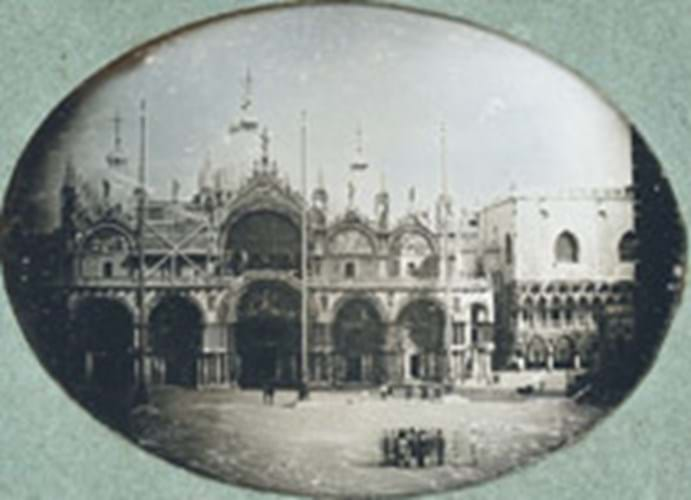
Then last week, an even bigger attraction of this sleeper was revealed when it transpired that the images belonged to John Ruskin and were part of the photographic record he commissioned and bought to record of his trips to Italy and the Alps to study nature and architecture.
So how did a keen-eyed photograph specialist go from whiff of potential to "a 110 per cent certainty" that he was looking at a photographic archive of Britain's most famous 19th century art critic? Mr Jacobson has revealed to ATG the details of his detective trail.
Ken's wife Jenny first spotted a brief but intriguing catalogue description with the key words "images on metal" late one night on the internet (the daguerreotype process involves capturing an image on a specially treated copper plate).
Ken called the auctioneers, Penrith Farmers' and Kidd the next day and was told the images were in very poor condition. Another, more detailed phone call to the auctioneers, when he asked some searching questions about their size and exact nature, assured him that the images were daguerreotypes, not ambrotypes (non specialists often erroneously confuse the two processes).
Mr Jacobson also wanted to know about subject matter: "Are they British?" he asked. He was told they were views of the Continent, churches and rocks and The Bridge of Sighs in Venice. "Then we knew immediately that we had to go and see them," he said. The majority of daguerreotypes are portraits. Topo-graphical subjects are rarer and more desirable.
Discussing the details with Jenny, Ken wondered about the Italian connection. "Who would have gone to Venice and taken daguerreotypes"? "Ruskin did," he mused, thinking of the critic's famous work, The Stones of Venice.
Then Jenny said: "This is Ruskin Country" (Ruskin lived at Brantwood near Coniston in the Lake District).
The Jacobsons have an enormous photographic reference library and Ken started researching. He consulted a book on the Bembridge collection of photographs, literature and other Ruskin effects assembled by an enthusiast named John Whitehouse in the 1930s, and now in the Ruskin Library at Lancaster University. A reproduction of Ruskin's daguerreotype inventory showed that not all those listed were at the library - some were missing; another tantalising clue, especially when Ken read the inventory descriptions and tied them in with the PFK cache.
"We couldn't eat or sleep," he said. They decided to make the journey north early and detour via the Ruskin Library to make a comparative inspection of their daguerreotypes, which by good luck happened to have been recently restored and were on view. There the Jacobsons checked out the subjects, the style of mount and the plate sizes. Given what they gleaned, they were "90/95 per cent sure" the PFK images were Ruskin's.
They arrived to view the cache the day before the sale: "I was so nervous I could hardly hold the plates," said Ken.
He expected to see some similarities and the subjects seemed right given Ruskin's interest in Alpine geological formations and Venetian architecture.
Around 120 Venetian subjects were recorded in Ruskin's daguerreotype inventory, but only about 30 have been traced - these would be a major addition.
But a key feature came when the Jacobsons checked the mounts. Most images had no glass protection, and some were almost invisible, but around a dozen were in frames with blue paper tape mounts that matched those in the Ruskin Library. More significantly, these had manuscript numbers on the back and the numbers and subjects of the images corresponded to those in Ruskin's inventory.
This was the clincher, it made Ken Jacobson "110 per cent" sure that he was looking at Ruskin's daguerreotypes.
Other details such as an ivory inlay to the wooden box inscribed Venice were the icing on the cake. After his successful £75,000 bid, the rest is now auction
history. Even without the all-important Ruskin connection this would be an important discovery in daguerreotype terms. Jacobson reckons it is the biggest archive of Venetian views and one of the largest topographical archives.
As to their final value, who knows? The Ruskin Library is understandably interested, but as Mr Jacobson told ATG: "It's a long road. They need to be restored and we will carry on researching them." Most of the treasures they have found in the past have been important to the history of photography. What makes this so exciting for him is the archive's broader importance to the history of art.
By ANNE CRANE




